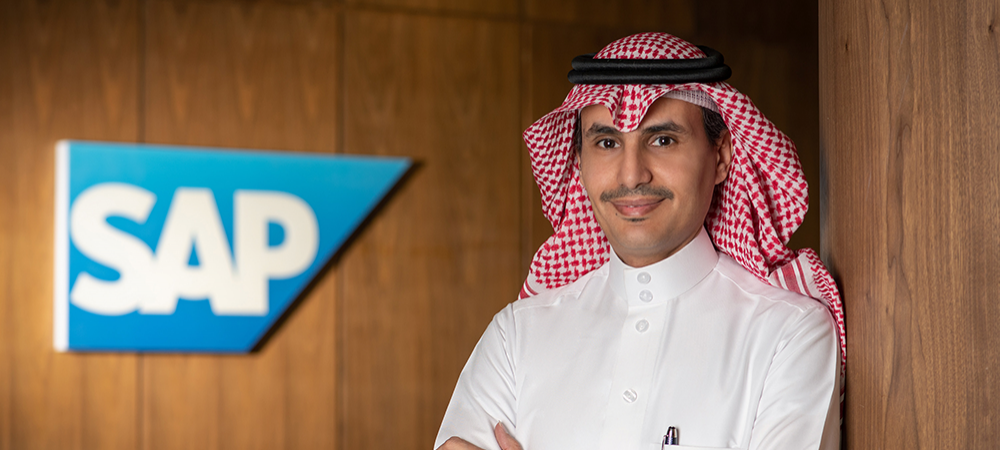With enterprises accelerating their Digital Transformation processes across the region, SAP is focusing on customer experience.Intelligent CIO spoke to SAP’s Senior Vice President and Managing Director for Middle East North, Ahmed Al-Faifi, about the company’s activities in the Middle East.
Across the GCC and the wider region, organisations of all sizes and industry verticals are ramping up their Digital Transformation with a focus on leveraging technology to enhance employee, citizen and customer experiences.
As a result, the Middle East and North Africa’s digital customer experience market is set to reach a record high of US$800 million, according to a recent report by Micro Market Monitor.
“Saudi Vision 2030 is catalysing growth in transport and logistics, including with Smart Cities; expansion of ports, airports, and urban transit infrastructure; and malls and travel – all key for customer experiences,” said Mohammed Alkhotani, Managing Director, SAP Saudi Arabia.
“The Middle East’s record-high customer experience market shows how Saudi firms can leverage GITEX to prioritise the end-to-end customer experience to optimise costs, productivity, scalability, and business competitiveness.”
Intelligent CIO spoke to Ahmed Al-Faifi, Senior Vice President and Managing Director, SAP Middle East North, about the company’s activities in the region.
What has SAP been doing in the Middle East in the past 12 months?
SAP laid the foundations a couple of years ago and year on year we are growing in the cloud around 40% to 60%.
And with SAP putting data centres in the region in the UAE and Saudi, we will now focus on the public sector in this region because they insist on having their data hosted in the region.
Cloud can also enable digital business innovation. For example, recent YouGov surveys of the region’s IT decision-makers, including 83% in Saudi Arabia and 76% in the UAE, indicated that having a cloud foundation is mandatory to move on to the next technologies like Artificial Intelligence and Blockchain.
What are the reasons for the rapid adoption of cloud in the region?
Number one. There has not been enough investment in the past in digital systems across many industries and customer segments. The lack of IT application legacy has also created the opportunity for Middle East organisations to move to the cloud directly.
The second reason is businesses are becoming very competitive which means they are leveraging digital technologies to become competitive.
What are the requirements of your Middle East customers?
They are no different to any customers in any other region because the challenges are the same.
Companies need to adopt technologies that focus more on the customers and give them the best experience possible. So, this is true all over the world, and the Middle East is no exception.
There are some industries, such as tourism and entertainment, that used to be low-profile in their technology adoption and Digital Transformation, and now are playing catch-up technology wise.
They’ve been behind for many years and didn’t invest enough, now they need to compete. You need to deploy technology for that. So, overall customer experience is the focus for the next couple of years.
What are your customers’ requirements?
Now there is disruption coming from outside individual industries which can provide a better service to customers. The focus is now on retaining customers which means companies have to be cost effective.
They need to be smart and understand what the customer needs and adopt whatever technologies are necessary. You might need to have partnerships as the old business model is not valid anymore.
So there are so many disruptions that customers ask us how they can be competitive. How they can retain their customers and attract more. These are big questions. Our answer is it is all about customer experience. If the customer enjoyed dealing with you, they will continue dealing with you and you can attract more customers.
Other companies are more in to making themselves more efficient, so they can pass a saving on to the customers so that they can attract more customers.
Which verticals are your customers operating in?
At SAP, we have specialised solutions for 25 different industries, most of which are active in the region.
In this region oil and gas are important but all other industries are active. We are going in to new industries like sports, entertainment and tourism.
To give you an example out of KSA, we have helped a sports league to get clubs to utilise IoT to be deployed in the stadium to make money by allowing commercials to sell to the fans.
Another idea we have suggested to the same sports league is to adopt the solution we have used with the German National Football Team. We use IoT to measure the performance of players and for coaches to be able to take real-time decisions. This is another solution we are trying to convince the sports league to host, and then allow subscriptions to different clubs to use the solution. So, there are so many ideas about future technologies.


